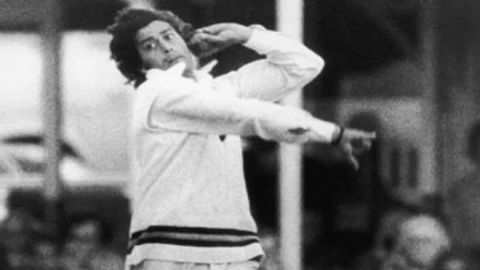The player of Team India who hid the bails of the stumps during the match, and then the batsman was out.
Cricket News Desk. England's victory in the Oval Test is the biggest story, but something else also happened in this Test which will always be mentioned in cricket. The story goes that Broad disturbs the bails above the stumps, shakes them (from left to right on the same set of stumps) and coincidentally the wicket falls immediately. This happened with Marnus Labuschagne in the first innings and Todd Murphy in the second innings. Broad described the exchange of bails at the stumps as an attempt to 'change fortunes' but also said that Nathan Lyon was doing the same. Is it true?
Lyon's most memorable event in this regard was the fourth Ashes Test at Old Trafford, 2019. England were at 163-2 with a 138-run partnership between Joe Root and Rory Burns. Lyon then turned the bails onto the non-striker's stump and Burns was out for just 2 runs and Root was out for just 3 runs.
After 5 days, Manoj Tiwari took a U-turn, retired!
If you want to know the funniest story of bail coming out of the stumps, then you have to go straight to the 1971 England-India Test. Coincidentally, the Test was also at the Oval at that time and it was the same Test in which Ajit Wadekar's team achieved its first Test win against England in England. England were out for just 101 runs in the second innings.
Eknath Solkar's role in this Test win is remembered fondly – even by those who don't know the score card. A few years ago, when the Test winning team was honored at the Nehru Center in Mumbai, Solkar had already left this world, but Solkar was the cricketer who was mentioned the most in that program.
Chandrasekhar said, 'The catches he took were brilliant – especially the catch that dismissed Alan Knott off Venkataraghavan in the second innings of the Test.' Ajit Wadekar was alive at the time of the incident and narrated how Solkar had 'stumped' Alan Knott, the world's best wicketkeeper at that time. What did Solkar do that the rejection of the note was mentioned so many times?
In fact, Knott had a very strange habit (one might even call it his superstition) – when he came to bat, he used not the bat but a bell to mark his keeper. Knott was a very tenacious batsman and his wicket often became a headache for many teams. The Indian team had to face a lot of problems due to this in that series. Knott had earlier saved England by making useful contributions with the bat in the same series. He also scored 90 in the first innings at the Oval and took England from 139-4 to 278-6. Therefore his wicket was very special for the Indian team.
Just as Ajit Wadekar hid Sunil Gavaskar in the Port of Spain Test the same year so that Gary Sobers could not touch him to try his luck – Solkar hid the bells placed on the stumps at the Oval so that Knott could not touch them. The guard could not be marked. He kept them in his pocket. When Knott turned to the bails to mark his keeper, there were no bails on the stumps. In Wadekar's words – 'This completely spoiled the mood of the note.' Solkar defended with the bat and put the balls back on the stumps.
Tumors After this, the tumors for which he was famous did not appear. The team was in trouble then and the score was 60-4 and he was out for just 1 run. There is no dearth of people who believe that only after his dismissal, Wadekar's team felt that they can now bowl out England on a very low score. Ackie took the famous catch that is often cited in debates about the best catch, to dismiss Knott for 1 run.


Comments are closed.